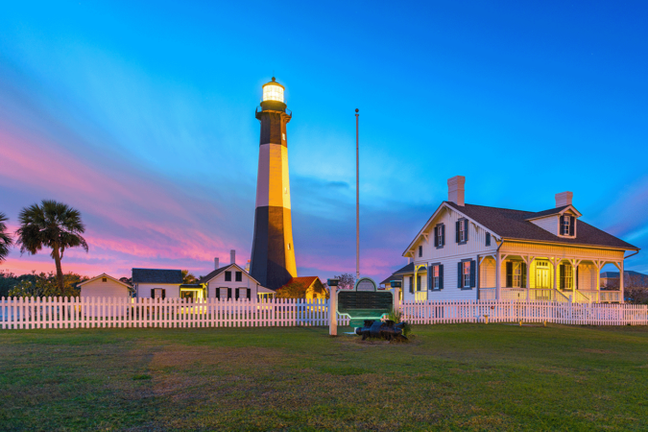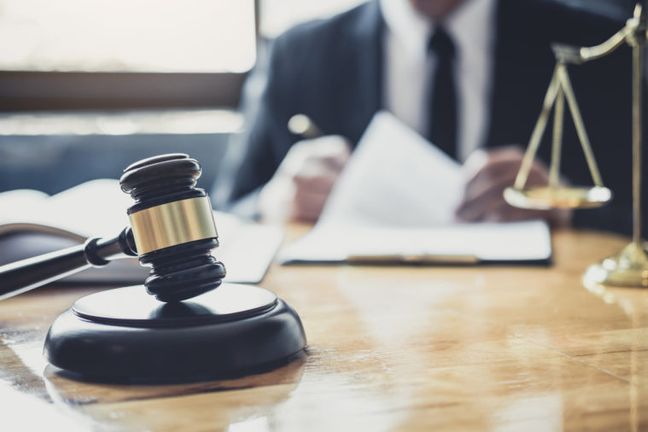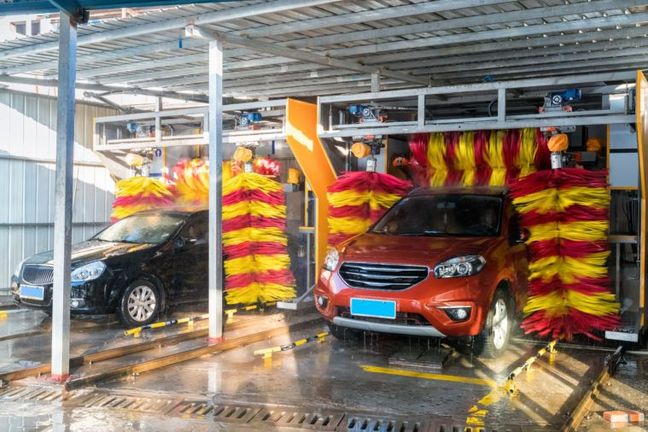The Checkered Past
The Colorado Supreme Court said it best: “the law of premises liability in Colorado has had something of a checkered history.”[i] In 1971, the Court overruled the common-law distinctions between trespassers, licensees, and invitees in determining the standard of care owed by the occupier of land towards those who come upon the land, because those principles occasioned harsh rulings as a matter of law against plaintiffs.[ii] Rigid adherence to the common law classifications had resulted in resolution, in many instances, of the owner’s liability as a matter of law, usurping the function of the jury.[iii] In its place, the Supreme Court chose to employ general negligence law, with just one factor being the status of the plaintiff’s entry onto the land. In 1986, the general assembly attempted to reinstate the common-law rules of liability.[iv] However, the legislature’s first attempt succumbed to an equal-protection challenge, because the Supreme Court determined it afforded less protection to invitees than to licensees, contrary to the common law, and was not justified either by logic or by history.[v] The general assembly substantially amended the statute, which remains in place today.[vi]
The Current State of Things
In 1990, the Colorado legislature enacted the Premises Liability Act,[vii] which reinstated the trespasser, license, and invitee classification scheme that existed prior to 1971.[viii] The stated purpose of the Premises Liability Act was to “create a legal climate [to] promote private property rights and commercial enterprise and…foster the availability and affordability of insurance.”
The first important feature of Colorado’s Premises Liability Act is that it is the exclusive remedy for a person injured on the property of another:
In any civil action brought against a landowner by a person who alleges injury occurring while on the real property of another and by reason of the condition of such property, or activities conducted or circumstances existing on such property, the landowner shall be liable only as provided in subsection (3) of this section…
Indeed, both the Colorado and Federal Courts have consistently held all civil actions brought against landowners in Colorado for injuries caused by the condition of the property are governed by the Premises Liability Act.[ix] Practically speaking, a plaintiff may only pursue a claim under the Premises Liability Act and cannot maintain both a claim under the Premises Liability Act and negligence, as a matter of law.[x] Indeed, the general assembly indicated its intent to completely occupy the field and supersede the existing law in the area, such that the Premises Liability Act “leaves no room for application of common law tort duties.”[xi]
Trespassers, Licensees, and Invitees
The Premises Liability Act goes on to classify and define trespassers, licensees, and invitees. “Trespasser” means a person who enters or remains on the land of another without the landowner’s consent.[xii] “Licensee” means a person who enters or remains on the land of another for the licensee’s own convenience or to advance his own interests, pursuant to the landowner’s permission or consent, and includes a social guest.[xiii] “Invitee” means a person who enters or remains on the land of another to transact business in which the parties are mutually interested or who enters or remains on such land in response to the landowner’s express or implied representation that the public is requested, expected, or intended to enter or remain.[xiv] The classification of an injured plaintiff as a trespasser, a licensee, or an invitee is a matter of law to be determined by the trial court.[xv]
While determining whether a person is a trespasser is relatively straightforward, the distinction between a licensee and an invitee is not necessarily so clear. The principal distinction between invitee and licensee under the Premises Liability Act turns on whether a person’s presence on the land was affirmatively invited or merely permitted.[xvi] If affirmatively invited, the person is an invitee, where if the person’s presence is merely permitted, the person is a licensee.[xvii] For instance, a bicyclist has implied consent to enter property and use a path for his or her own convenience or to advance his or her own interests, and thus the bicyclist would be a licensee. Whereas, a person injured while inside a bicycle shop looking to purchase a bicycle would be an invitee.
In terms of the elements which must be proven in order to recover under each category:
(3)(a) A trespasser may recover only for damages willfully or deliberately caused by the landowner.
(3)(b) A licensee may recover only for damages caused:
(I) By the landowner’s unreasonable failure to exercise reasonable care with respect to dangers created by the landowner of which the landowner actually knew; or
(II) By the landowner’s unreasonable failure to warn of dangers not created by the landowner which are not ordinarily present on property of the type involved and of which the landowner actually knew.
(3)(c)(I) …an invitee may recover for damages caused by the landowner’s unreasonable failure to exercise reasonable care to protect against dangers of which he actually knew or should have known.[xviii]
Landowners
Although there have been several iterations of the Premises Liability Act, the definition of a landowner has remained a constant. A “landowner” includes, without limitation, an authorized agent or a person in possession of real property and a person legally responsible for the condition of real property or for the activities conducted or circumstances existing on real property.[xix]
The Premises Liability Act focuses on duties owed by a landowner in his or her legal capacity as a landowner; that is, someone who is legally responsible for the condition of the property, or for the activities conducted or circumstances existing on the property.[xx] A person “in possession of” land is one who occupies the land with intent to control it, although not necessarily to the exclusion of all others.[xxi] Logically, a person “in possession of” real property is presumed to be responsible for the conditions, activities, or circumstances on that property.”[xxii] However, the general assembly, through its definition, also conferred landowner status upon persons who are “otherwise legally responsible” for the conditions, activities, or circumstances on the property, even though such persons are not in possession of the property.[xxiii] Accordingly, prospective liability is placed on those who are legally responsible for the conditions, activities, or circumstances on the property. This may often be determined by contract, such as rental or management agreements.[xxiv]
Importantly, the statutory definition of “landowner” does not automatically make the holder of the title to the property a “landowner” for purposes of determining premises liability under the statute.[xxv]
Under common law principles in effect in Colorado before the adoption of the Premises Liability Act, a lessor of property who had transferred control over the leased premises to a lessee generally owed no duty to third persons injured on the premises by a dangerous condition.[xxvi] There were several exceptions to this general common law rule of non-liability of the lessor. For example, a lessor may owe a duty under some circumstances if the dangerous condition existed at the time possession was transferred[xxvii] or if, after transferring possession, the lessor failed to exercise reasonable care to perform a contract to repair the premises or was otherwise negligent in making repairs[xxviii] or if the lessor retained control over the portion of the premises where the condition existed.[xxix] Even after enactment of the present day Premises Liability Act, courts have observed, just as under common law, in the absence of proof as to one of the recognized exceptions, a lessor who has transferred possession and control over the leased premises to a lessee has no liability for injuries resulting from a dangerous condition of the premises.[xxx]
Defenses
While the general assembly did not use the word “defenses” when it defined a landowner’s duties, a landowner can assert the defense no duty was owed under the statute. For example, in a premises liability suit, a landowner can argue that he or she is not a landowner, as defined by the statute, thereby owing no duty at all.
When drafting the Premises Liability Act, the general assembly expressly provided for the attractive nuisance doctrine, as applied to persons under fourteen years of age.[xxxi] Per case law interpreting the doctrine, a child plaintiff must have been attracted to the object at issue and it does not matter whether the child plaintiff was an invitee, licensee, or trespasser at the time of entering the premises.[xxxii] However, it is a bar to recovery if the child plaintiff is older than fourteen years of age.
Notably, however, is the loss of the defense of “open and obvious” following enactment of the modern day Premises Liability Act. It used to be if a condition on the premises was determined to be open and obvious, a plaintiff was barred from recovery. As it stands today, the facts supporting this defense may still be argued at trial as comparative negligence or assumption of risk defenses, which were not preempted by the statute.[xxxiii]
Takeaway
Premises liability claims are no doubt prevalent. From a practical standpoint, we see the most pervasive abuse of the Premises Liability Act in the pleading of claims for relief for both the Premises Liability Act and common law negligence. Despite the express wording of the Premises Liability Act and well-established and consistent case law explaining the statute abrogated common law negligence, plaintiff attorneys continue to plead both as a matter of course. Most of the time, opposing counsel will stipulate to the voluntary dismissal of the negligence claim; however, there are instances where motion practice is necessary to remove the improper negligence claim.
While the plaintiff’s classification as a trespasser, licensee, or invitee is fairly straightforward under the Premises Liability Act, the statutory definition and case law interpretation with respect to a landowner, and thus the insured defendants we represent, may require a far deeper evaluation, which is often rooted in contract. It is therefore crucial that the insured defendant and assigned counsel have an involved conversation very early on in the representation about possession and who may have responsibilities for the conditions, activities, or circumstances on the property. Moreover, all contracts related to the premises should be provided for review so that these legal issues can be thoroughly evaluated and future handling recommendations can be made.
[i] Pierson v. Black Canyon Aggregates, Inc., 48 P.3d 1215, 1218 (Colo. 2002), as modified on denial of reh’g (July 1, 2002).
[ii] Mile High Fence Co. v. Radovich, 175 Colo. 537, 542–45, 489 P.2d 308, 312–13 (1971).
[iii] Id. at 312.
[iv] See ch. 109, sec. 1, § 13–21–115, 1986 Colo. Sess. Laws 683.
[v] Gallegos v. Phipps, 779 P.2d 856, 862 (Colo.1989).
[vi] See ch. 107, sec. 1, § 13–21–115, 1990 Colo. Sess. Laws 867.
[vii] C.R.S. § 13-21-115(2).
[viii] The Colorado Supreme Court struck down as unconstitutional the Premises Liability Act in Gallegos v. Phipps, 779 P.2d 856, 862-63 (Colo.1989). In 1990, the Colorado legislature amended the Premises Liability Act to address the Supreme Court’s equal protection concerns and the status classifications, i.e. trespasser, licensee, and invitee, once again became applicable.
[ix] Wark v. U.S., 2001, 269 F.3d 1185 (10th Cir. 2001); Stone v. Life Time Fitness, Inc., App.2016, 411 P.3d 225, modified, certiorari denied 2017 WL 2772252; Corder v. Folds, App.2012, 292 P.3d 1177; Wycoff v. Grace Community Church of Assemblies of God, App.2010, 251 P.3d 1260; Burbach v. Canwest Inv., LLC, App.2009, 224 P.3d 437; Lombard v. Colorado Outdoor Educ. Center, Inc., 2008, 187 P.3d 565; Wilson v. Marchiondo, App.2005, 124 P.3d 837, rehearing denied, certiorari denied 2005 WL 3764931; Sweeney v. United Artists Theater Circuit, Inc., App.2005, 119 P.3d 538, certiorari denied 2005 WL 2181649; Vigil v. Franklin, App.2003, 81 P.3d 1084, certiorari granted 2004 WL 1152772, reversed 103 P.3d 322; Wyle v. Skiwatch Condominium Corp., 2006, 183 Fed.Appx. 760, 2006 WL 1585630, Unreported.
[x] Legro v. Robinson, 2012 COA 182, ¶ 20, 328 P.3d 238, aff’d, 2014 CO 40, 325 P.3d 1053 (the Premises Liability Act abrogates common law negligence claims against landowners).
[xi] Lucero v. Ulvestad, 2015 COA 98, ¶ 12 (citing Vigil, 103 P.3d at 328 (“[T]he plain language preempts prior common law theories of liability, and establishes the statute as the sole codification of landowner duties in tort”)).
[xii] C.R.S. § 13-21-115(5)(c).
[xiii] C.R.S. § 13-21-115(5)(b).
[xiv] C.R.S. § 13-21-115(5)(a).
[xv] Traynom v. Cinemark USA, Inc., 2013, 940 F.Supp.2d 1339.
[xvi] Legro v. Robinson, App.2015, 369 P.3d 785.
[xvii] Id.
[xviii] C.R.S. § 13-21-115(3).
[xix] C.R.S. § 13-21-115(1).
[xx] Id.
[xxi] Jordan v. Panorama Orthopedics & Spine Ctr., P.C., 2015 CO 24, ¶ 23, 346 P.3d 1035.
[xxii] Id.
[xxiii] Id.
[xxiv] See id. at ¶¶ 34–37 (tenant was not legally responsible for the condition of the sidewalk where the plaintiff fell because the lease between tenant and landlord assigned responsibility for ordinary maintenance and upkeep of the common areas to the landlord).
[xxv] Perez v. Grovert, 962 P.2d 996, 999 (Colo.App.1998); cf. Nordin v. Madden, 148 P.3d 218, 220 (Colo.App.2006) (discussing when a landlord retains enough control over the premises to be considered a landowner under the Premises Liability Act).
[xxvi] See Rian v. Imperial Municipal Services Group, Inc., 768 P.2d 1260 (Colo.App.1988); Nuzum v. Rampart Embers, Inc., 487 P.2d 587 (Colo.App.1971) (not selected for official publication); see also Restatement (Second) of Torts §§ 355–356 (1965).
[xxvii] See Baughman v. Cosler, 169 Colo. 534, 459 P.2d 294 (1969); Restatement (Second) of Torts §§ 356–362 (1965).
[xxviii] See Davis v. Marr, 160 Colo. 27, 413 P.2d 707 (1966).
[xxix] See Restatement (Second) of Torts §§ 357, 360–362 (1965).
[xxx] Perez, 962 P.2d at 999.
[xxxi] C.R.S. § 13-21-115(2).
[xxxii] S.W. v. Towers Boat Club, Inc., 2013, 315 P.3d 1257.
[xxxiii] Union Pacific R.R. v. Martin, 209 P.3d 185 (Colo. 2009).


 Author: Michael D. Drews
Author: Michael D. Drews
 Privacy vs. Relevance: How Deep Can Discovery Go in Colorado Lien Cases?
Privacy vs. Relevance: How Deep Can Discovery Go in Colorado Lien Cases?
 Stale Bread: Workers Accuse Panera of Wage Theft
Stale Bread: Workers Accuse Panera of Wage Theft
 Civil Procedure Updates to Know in New York for 2025
Civil Procedure Updates to Know in New York for 2025
 Collaboration Is Key to Preparation in the Weeks Before Trial
Collaboration Is Key to Preparation in the Weeks Before Trial
 But I Didn’t Mean to Do It …
But I Didn’t Mean to Do It …
 Be Bold, Be Bright, But Be Brief…
Be Bold, Be Bright, But Be Brief…
 Taming the Wolf: Florida’s Fifth DCA Holds the Line on Tort Reform
Taming the Wolf: Florida’s Fifth DCA Holds the Line on Tort Reform
 Power of Persuasion
Power of Persuasion
 Ask Atty: William Johnson
Ask Atty: William Johnson
 Colorado Restaurant Failed to Prove Physical Loss from COVID-19
Colorado Restaurant Failed to Prove Physical Loss from COVID-19
 Are Employer-Mandated Vaccines the Future? New York State Bar Association Says Yes
Are Employer-Mandated Vaccines the Future? New York State Bar Association Says Yes
 Exposure to First-Party Insurance Bad Faith Claims in Colorado
Exposure to First-Party Insurance Bad Faith Claims in Colorado
 New York Expands Protections for Elderly and Opens the Door for Litigation
New York Expands Protections for Elderly and Opens the Door for Litigation
 Corporate Missteps Lead To Costly Settlement
Corporate Missteps Lead To Costly Settlement
 New York Updates Vaccination Requirements for In-Person Workplaces
New York Updates Vaccination Requirements for In-Person Workplaces
 New Rules for 2022 Governing Employee Compensation in Colorado
New Rules for 2022 Governing Employee Compensation in Colorado
 New York State Requires Employers to Notify of Electronic Monitoring
New York State Requires Employers to Notify of Electronic Monitoring
 Are New Jersey Insurers on the Hook for Restaurants’ COVID-19 Losses?
Are New Jersey Insurers on the Hook for Restaurants’ COVID-19 Losses?